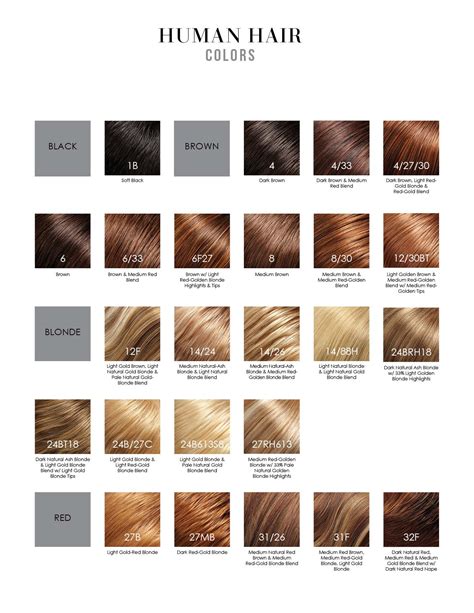The Spectrum of Shades
Human hair color, a symphony of pigments and genetic variations, spans a remarkable spectrum of over 10,000 hues. From the ebony depths of black to the sun-kissed highlights of blonde, each shade tells a unique story of our lineage and ancestry.

Melanin: The Coloring Agent
The primary determinant of hair color is melanin, a pigment produced by cells in the hair follicle. There are two types of melanin: eumelanin and pheomelanin.
- Eumelanin: Responsible for black and brown hair colors, eumelanin ranges from deep, rich shades to softer, more neutral tones.
- Pheomelanin: The pigment behind red and reddish shades of hair, pheomelanin imparts a fiery warmth to our locks.
Genetics: The Color Code
Our hair color is largely determined by our genes. Two specific genes, MC1R and OCA2, play a crucial role in regulating melanin production. Variations in these genes can lead to a wide array of hair colors, from the darkest blacks to the lightest blondes.
Hair Color Distribution
The distribution of hair colors varies significantly around the world. According to a study published by Nature Genetics:
- Black: The most common hair color, found in over 80% of the global population.
- Brown: The second most prevalent, accounting for approximately 12% of people worldwide.
- Blonde: Found in about 4% of the world’s population, with higher concentrations in Northern European countries.
- Red: The rarest hair color, occurring in less than 1% of individuals.
Beyond Genetics: Environmental Factors
While genetics holds the primary sway over hair color, environmental factors can also influence its appearance.
- Sun Exposure: Exposure to ultraviolet (UV) radiation can lighten hair, especially in the summer months.
- Hair Dyes: Chemical hair dyes can alter hair color permanently or temporarily.
- Aging: As we age, melanin production decreases, which can lead to hair turning gray or white.
Hair Color and Identity
Hair color is often associated with personal identity and cultural heritage.
- Cultural Symbolism: In many cultures, hair color holds symbolic meanings. For example, black hair is associated with strength and power in some African traditions, while blonde hair is often seen as a symbol of beauty and youth in Western culture.
- Personal Expression: Hair color can be a form of self-expression, allowing individuals to showcase their individuality and style.
Hair Color Innovation
In recent years, there has been a surge of innovation in hair color technology.
Chromogenic Hair: A new type of hair dye that reacts to chemicals in the hair, resulting in a long-lasting, vibrant color.
Molecular Hair Coloring: Utilizes nanoparticles to deliver color molecules directly into the hair shaft, providing precise and customizable color results.
Strategies for Enhancing Hair Color
- Protecting from Sun Damage: Wear a hat or use UV-protective hairspray to prevent sun exposure that can lighten hair.
- Color-Enhancing Shampoos and Conditioners: Use products designed to brighten or deepen hair color.
- Regular Hair Trims: Remove split ends and promote healthy hair growth, which can enhance color vibrancy.
Table 1: Common Hair Colors and Their Prevalence
| Hair Color | Prevalence |
|---|---|
| Black | >80% |
| Brown | 12% |
| Blonde | 4% |
| Red | <1% |
Table 2: Genes Involved in Hair Color Regulation
| Gene | Function |
|---|---|
| MC1R | Regulates eumelanin production |
| OCA2 | Regulates pheomelanin production |
Table 3: Environmental Factors Affecting Hair Color
| Factor | Effect |
|---|---|
| Sun Exposure | Lightens hair |
| Hair Dyes | Alters hair color permanently or temporarily |
| Aging | Decreases melanin production, leading to gray or white hair |
Table 4: Hair Color Innovation and Applications
| Technology | Application |
|---|---|
| Chromogenic Hair | Long-lasting, vibrant color |
| Molecular Hair Coloring | Precise, customizable color results |
